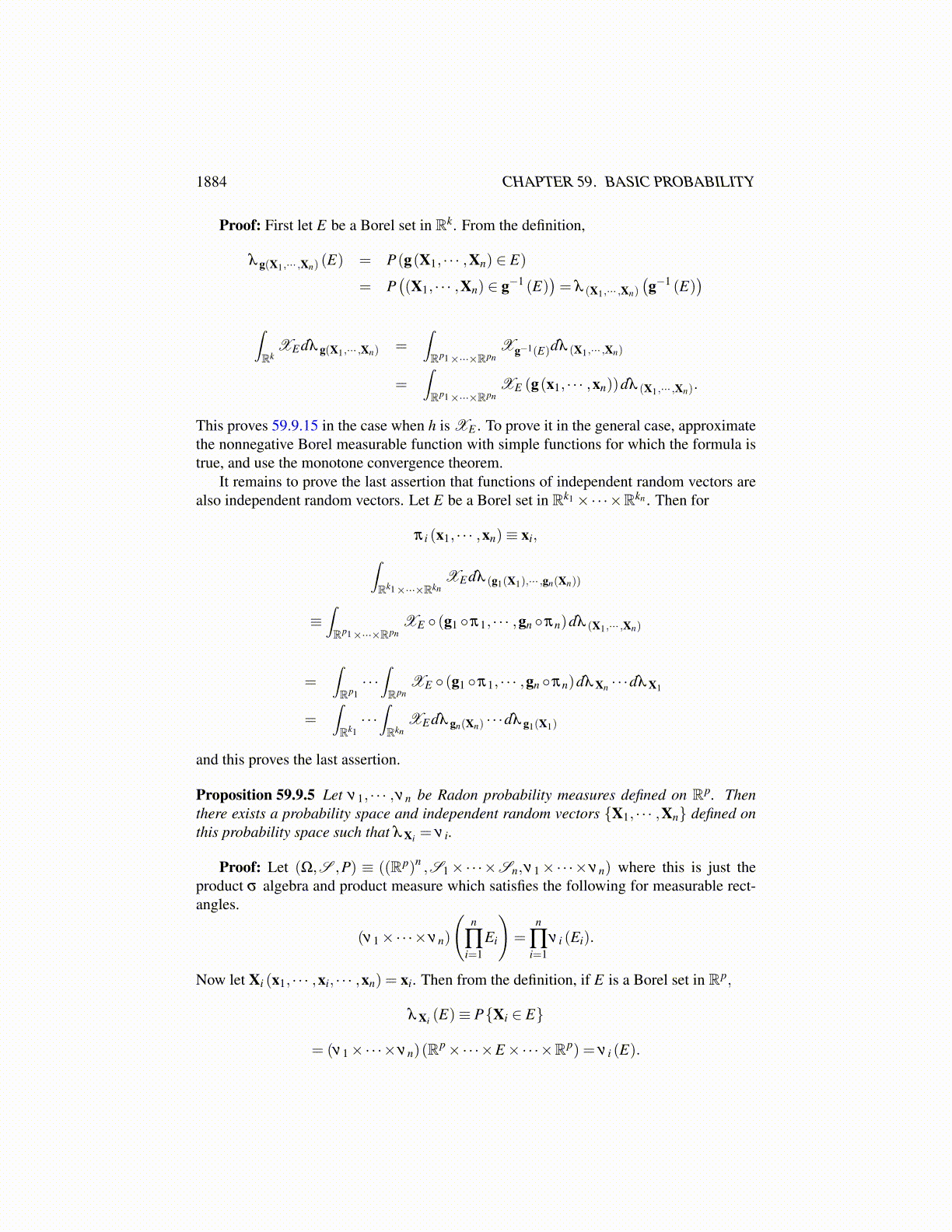
1884 CHAPTER 59. BASIC PROBABILITY
Definition 59.9.2 Let {X1, · · · ,Xn} be random vectors defined on a probability space hav-ing values in Rp1 , · · · ,Rpn respectively. The random vectors are independent if for every Ea Borel set in Rp1 ×·· ·×Rpn , ∫
Rp1×···×RpnXEdλ (X1,··· ,Xn)
=∫Rp1· · ·∫Rpn
XEdλ Xndλ Xn−1 · · ·dλ X2dλ X1 (59.9.14)
and the iterated integration may be taken in any order. If A is any set of random vectorsdefined on a probability space, A is independent if any finite set of random vectors fromA is independent.
Thus, the random vectors are independent exactly when the dependence on the givensin 59.9.13 can be dropped.
Does this amount to the same thing as discussed earlier? Suppose you have three ran-dom variables X,Y,Z. Let A = X−1 (E), B = Y−1 (F) ,C = Z−1 (G) where E,F,G areBorel sets. Thus these inverse images are typical sets in σ (X) ,σ (Y) ,σ (Z) respectively.First suppose that the random variables are independent in the earlier sense. Then
P(A∩B∩C) = P(A)P(B)P(C)
=∫Rp1
XE (x)dλ X
∫Rp2
XF (y)dλ Y
∫Rp3
XG (z)dλ Z
=∫Rp1
∫Rp2
∫Rp3
XE (x)XF (y)XG (z)dλ Zdλ Ydλ X
AlsoP(A∩B∩C) =
∫Rp1×Rp2×Rp3
XE (x)XF (y)XG (z)dλ (X,Y,Z)
=∫Rp1
∫Rp2
∫Rp3
XE (x)XF (y)XG (z)dλ Z|xydλ Y|xdλ X
Thus ∫Rp1
∫Rp2
∫Rp3
XE (x)XF (y)XG (z)dλ Zdλ Ydλ X
=∫Rp1
∫Rp2
∫Rp3
XE (x)XF (y)XG (z)dλ Z|xydλ Y|xdλ X
Now letting G = Rp3 , it follows that∫Rp1
∫Rp2
XE (x)XF (y)dλ Ydλ X
=∫Rp1
∫Rp2
XE (x)XF (y)dλ Y|xdλ X
By uniqueness of the slicing measures or an application of the Besikovitch differentiationtheorem, it follows that for λ X a.e. x,
λ Y = λ Y|x